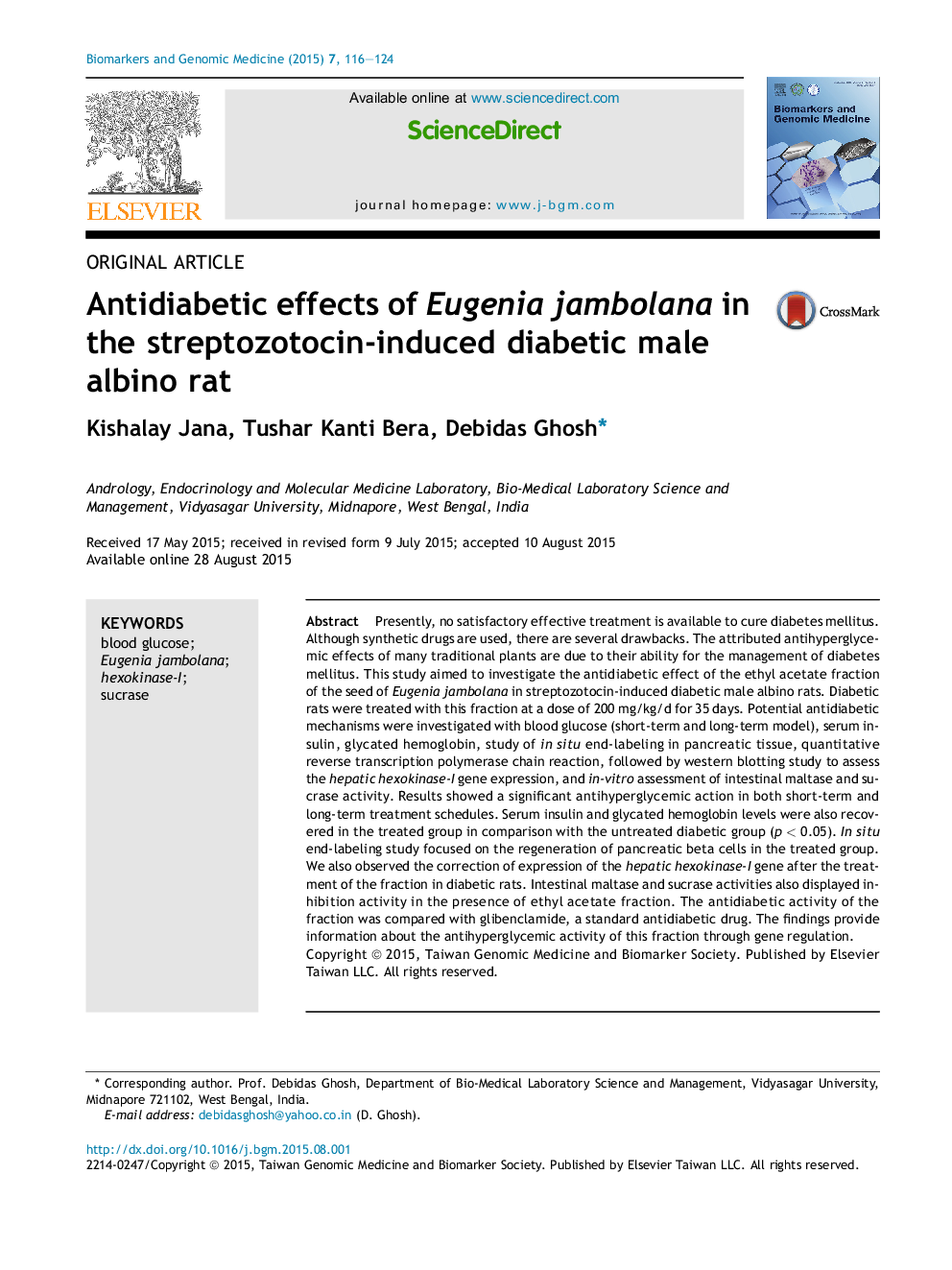| Article ID | Journal | Published Year | Pages | File Type |
|---|---|---|---|---|
| 3459307 | Biomarkers and Genomic Medicine | 2015 | 9 Pages |
Presently, no satisfactory effective treatment is available to cure diabetes mellitus. Although synthetic drugs are used, there are several drawbacks. The attributed antihyperglycemic effects of many traditional plants are due to their ability for the management of diabetes mellitus. This study aimed to investigate the antidiabetic effect of the ethyl acetate fraction of the seed of Eugenia jambolana in streptozotocin-induced diabetic male albino rats. Diabetic rats were treated with this fraction at a dose of 200 mg/kg/d for 35 days. Potential antidiabetic mechanisms were investigated with blood glucose (short-term and long-term model), serum insulin, glycated hemoglobin, study of in situ end-labeling in pancreatic tissue, quantitative reverse transcription polymerase chain reaction, followed by western blotting study to assess the hepatic hexokinase-I gene expression, and in-vitro assessment of intestinal maltase and sucrase activity. Results showed a significant antihyperglycemic action in both short-term and long-term treatment schedules. Serum insulin and glycated hemoglobin levels were also recovered in the treated group in comparison with the untreated diabetic group (p < 0.05). In situ end-labeling study focused on the regeneration of pancreatic beta cells in the treated group. We also observed the correction of expression of the hepatic hexokinase-I gene after the treatment of the fraction in diabetic rats. Intestinal maltase and sucrase activities also displayed inhibition activity in the presence of ethyl acetate fraction. The antidiabetic activity of the fraction was compared with glibenclamide, a standard antidiabetic drug. The findings provide information about the antihyperglycemic activity of this fraction through gene regulation.
